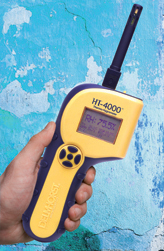As a homeowner, mold is one of the most common and frustrating problems you can face. While requirements vary from state to state, having your mold mold inspected by a professional is of the utmost importance.
Additionally, the presence of moisture and mold can pose a significant threat to the structural integrity of a home and can cause a variety of medical problems. In fact, mold has been tied to the cause and development of asthma.
In moderate and warm climates, the prevalence of water damage and moisture problems in homes range anywhere from 10-60%. On the other hand, the presence of indoor mold in the same environment is estimated to be as high as 30%.
In colder regions, however, the prevalence of indoor mold ranges from 5-10%. In short, moisture and mold are widespread problems that can cause real trouble for homeowners regardless of location.
Moisture & Mold Danger Zones
In past posts we’ve talked about the higher likelihood of moisture collecting around certain areas. Namely, these places include windows, areas close to leaky pipes like under the sink, behind the refrigerator and behind certain types of siding. In addition to those hot spots, it’s important for an inspector to use his moisture meter in risky areas such as the basement and attic.
Leaky roofs and past flooding that didn’t properly dry are two of the biggest danger points for moisture collection and mold growth. A good home inspection moisture meter is an essential tool for measuring hidden moisture in those areas and determining how widespread a visible problem might be.
Using a Moisture Meter in Attics & Basements
A seasoned home inspector will undoubtedly recognize certain signs of water damage, moisture collection and possible mold accumulation during his visual inspection. However, the experienced inspector also knows that not everything is visible on the surface. That’s where a good, dependable and easy to use home inspection moisture meter comes in.
 Using a meter to check areas around pipes, A/C units and other appliances that may cause leakage or condensation problems may reveal moisture collecting inside your walls. Likewise, when there are small drywall or ceiling stains — or signs of past repairs in a basement, attic or other area commonly susceptible to moisture — a moisture meter allows the inspector to quickly determine whether a problem is still lurking behind that patched wall or dried-up outer surface.
Using a meter to check areas around pipes, A/C units and other appliances that may cause leakage or condensation problems may reveal moisture collecting inside your walls. Likewise, when there are small drywall or ceiling stains — or signs of past repairs in a basement, attic or other area commonly susceptible to moisture — a moisture meter allows the inspector to quickly determine whether a problem is still lurking behind that patched wall or dried-up outer surface.
Getting to the Root of the Problem
Often times, mold may be visible and the inclination may be to simply clean it up. However, cleaning surface mold without locating the root of the problem is pointless. If there’s moisture trapped in the wall, roof or flooring, that mold will grow back — and may continue to lurk out of sight even when the homeowner thinks it’s been eradicated.
A professional with a home inspection moisture meter can find the source of the moisture, so the homeowner can fix the problem once and for all.
Regardless of the requirements in your state, finding hidden moisture and mold is always a valuable service to prospective home buyers or current homeowners who may be unaware that their health and integrity of their home is at risk. Make the most of the right home inspection moisture meter to give them the information they need to protect themselves and their property for years to come.
For more information regarding how you can find the right moisture meter for all of your home inspection needs, contact one of our specialists today!

Comments